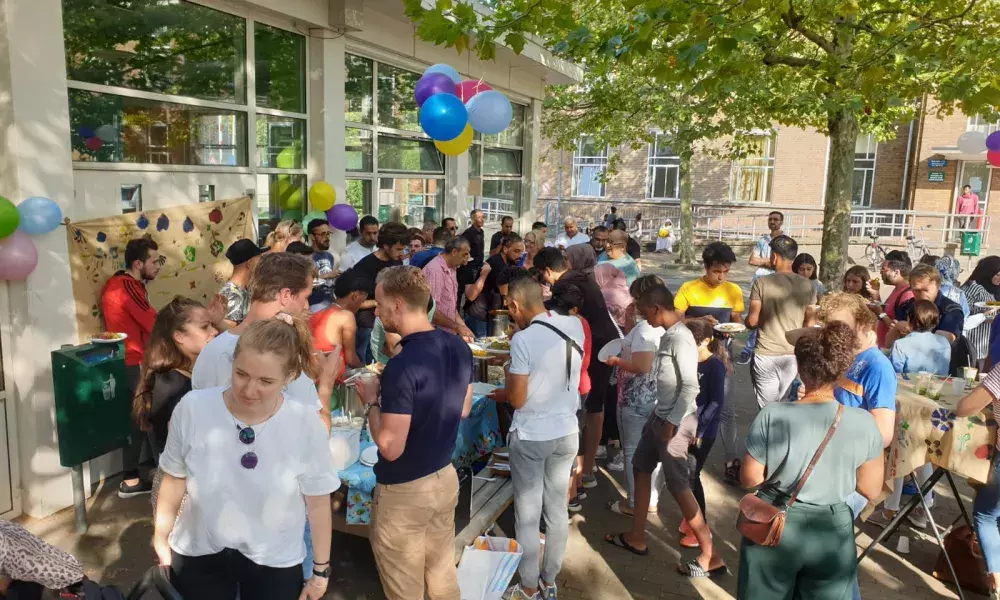
Executive summary
During the last year, despite the fact that the period for funding activities by the UIA Initiative ended, the project approach and methodology have continued to be implemented in the reception centre for asylum seekers in Haydn.
The municipality's own financing has made it possible to adapt the model to the new centre, which is owned by COA (Central Organizations for the Reception of Asylum Seekers) although with some differences from the Overvecht centre. Training in entrepreneurship and English have been consolidated as well as mentoring and coaching support. Almost all the project partners are continuing in this new phase and social and cultural activities have increased.
The sustainability of the project is guaranteed at least for the next years, thanks to the political consensus and the commitment of the municipal government to include the project in its integration policy strategy.
Thanks to the lessons learned, the project's approach has been adjusted and its commitment to inclusion from day one has been consolidated. To this end, it is considered essential to identify the needs and interests of the neighbourhood's residents in order to provide resources, spaces and tools that are relevant to both asylum seekers and neighbours. This facilitates motivation and the creation of personal and social networks that fosters inclusion.
The activities that have been identified as most effective are those that are based on the equal status of the participants, with a focus on cooperation to achieve common objectives.
The project has had to manage various complexities and challenges that have forced the adjustment and adaptation of some elements of the approach and activities. In this sense, the external evaluation of the project has identified strengths and also some weaknesses that should be taken into account in this new phase. But beyond the necessary adjustments, logical in such an innovative and complex project, we can say that it has had an important impact that goes beyond the limitations of the project itself.
We can say that the Einstein Plan has been a turning point in the reception policies for asylum seekers in Utrecht and has managed to influence policies at state level. It has shown that the role of cities is key to working from the proximity for inclusion and to manage the reception not only thinking about refugees but about the whole population, as a major challenge of the present time, but also as an opportunity. Collaboration between the different levels of administration is shown to be fundamental, despite the differences that may exist between the priorities and approaches of the state and local levels.
During the last year, despite the fact that the period for funding activities by the UIA Initiative ended, the project approach and methodology have continued to be implemented in the reception centre for asylum seekers in Haydn.
The municipality's own financing has made it possible to adapt the model to the new centre, which is owned by COA (Central Organizations for the Reception of Asylum Seekers) although with some differences from the Overvecht centre. Training in entrepreneurship and English have been consolidated as well as mentoring and coaching support. Almost all the project partners are continuing in this new phase and social and cultural activities have increased.
The sustainability of the project is guaranteed at least for the next years, thanks to the political consensus and the commitment of the municipal government to include the project in its integration policy strategy.
Thanks to the lessons learned, the project's approach has been adjusted and its commitment to inclusion from day one has been consolidated. To this end, it is considered essential to identify the needs and interests of the neighbourhood's residents in order to provide resources, spaces and tools that are relevant to both asylum seekers and neighbours. This facilitates motivation and the creation of personal and social networks that fosters inclusion.
The activities that have been identified as most effective are those that are based on the equal status of the participants, with a focus on cooperation to achieve common objectives.
The project has had to manage various complexities and challenges that have forced the adjustment and adaptation of some elements of the approach and activities. In this sense, the external evaluation of the project has identified strengths and also some weaknesses that should be taken into account in this new phase. But beyond the necessary adjustments, logical in such an innovative and complex project, we can say that it has had an important impact that goes beyond the limitations of the project itself.
We can say that the Einstein Plan has been a turning point in the reception policies for asylum seekers in Utrecht and has managed to influence policies at state level. It has shown that the role of cities is key to working from the proximity for inclusion and to manage the reception not only thinking about refugees but about the whole population, as a major challenge of the present time, but also as an opportunity. Collaboration between the different levels of administration is shown to be fundamental, despite the differences that may exist between the priorities and approaches of the state and local levels.
1. Progress made over the last months
In the previous journal we already commented that the reception centre for asylum seekers in the Overvecht district had to close down, but the project model was adapted to a new centre in Haydn's neighbourhood, albeit with some changes.
The positive impact of the project resulted in this adaptation to a new centre, financed with its own funds without the need for funding from the UIA Initiative.
This is a neighbourhood with different characteristics from Overvecht, where there were few social and cultural resources and facilities. Haydn's neighbourhood is much more dynamic with an important social and cultural offer and where many local and active actors and organisations are present.
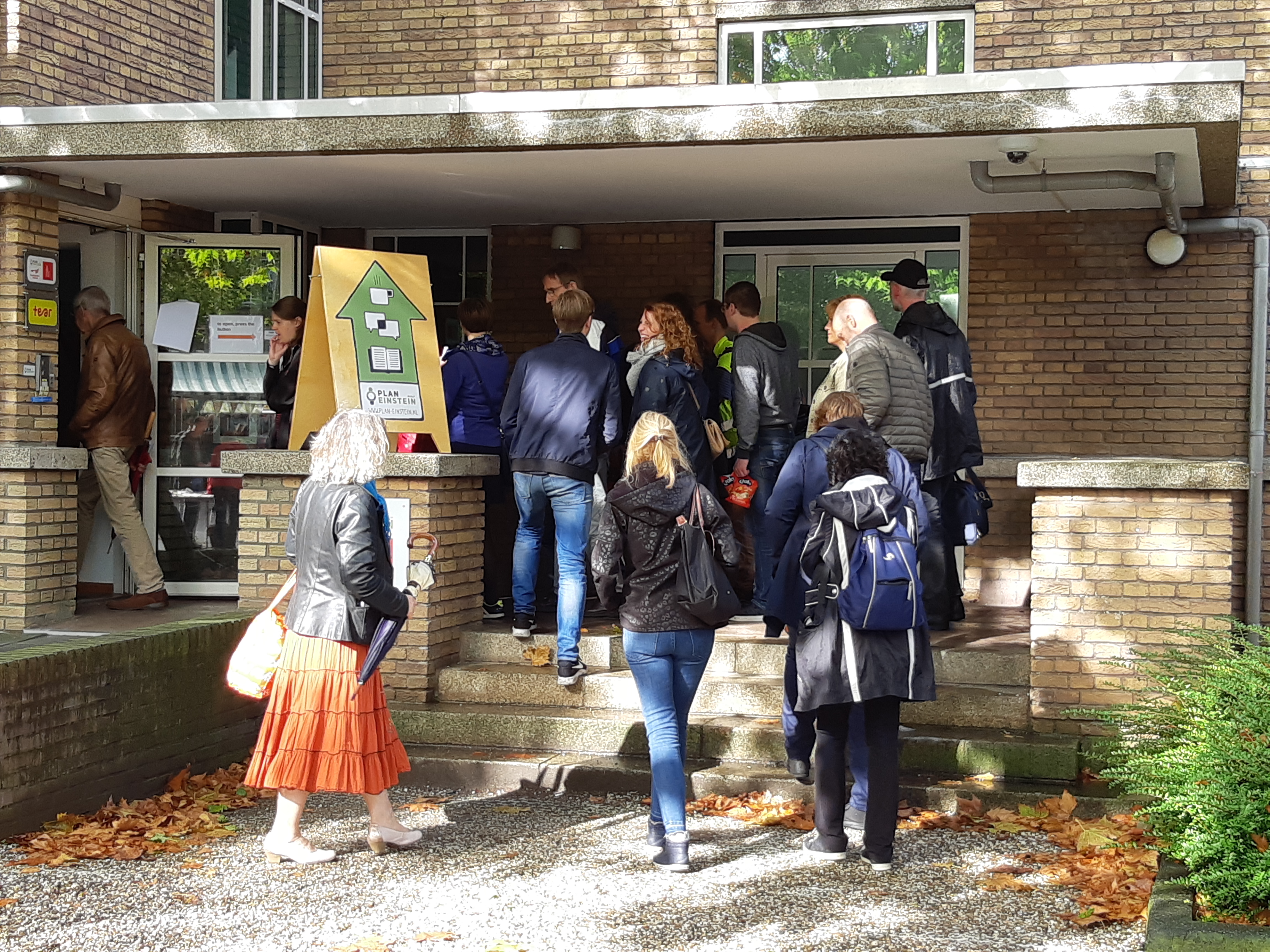
The profile of the asylum seekers is also different from that of the Overvecht centre, where most of them came from Syria and also had a good chance of getting a residence permit. At Haydn, asylum-seekers come from a wide range of countries, including Afghanistan, Venezuela, Yemen and other African countries. Another difference is that the processing of applications is now taking longer and the time spent in the centre can be as long as a year, whereas in the previous centre the average was four months.
Another big difference is that this centre is owned by COA and this has also limited the possibilities of adapting some aspects of the project approach. At the moment the SOCIUS youngsters cannot live in this centre and the open and common space is in the attic and is less accessible.
However, despite these limitations, the project approach has been able to adapt to the new context, and new opportunities that were not in Overvecht are being taken advantage of.
A very good sign is that most of the project partners are still involved in this new phase, and new partners have joined, and this allows continuity and the use of the know-how generated and the adaptation of activities to the lessons learned.
Training sessions in English and in entrepreneurship are taking place normally and with a lot of participation, especially in the English courses. The activities promoted by the Social Impact Factory for mentoring and coaching are also being consolidated and adapted to the new context.
But surely the main change in this new phase of the project is that if in Overvecht the social and cultural activities that promoted the meeting and collaboration spaces were done in the centre itself or in the surroundings to attract the residents of a neighbourhood with little offer of this type, in Haydn it is the opposite. In this neighbourhood there is a lot of activity, and the strategy of the project managers is to encourage asylum seekers to go outside the centre and participate with the neighbours in activities in different spaces and socio-cultural facilities in the neighbourhood.
The project has increased the number and variety of activities through the creation of alliances with new partners. This variety in the range of activities on offer means that asylum seekers find more options related to their interests and profiles, from cultural and creative activities (theatre, music, design...) to sports, gardening, or the development of practical skills in other fields.
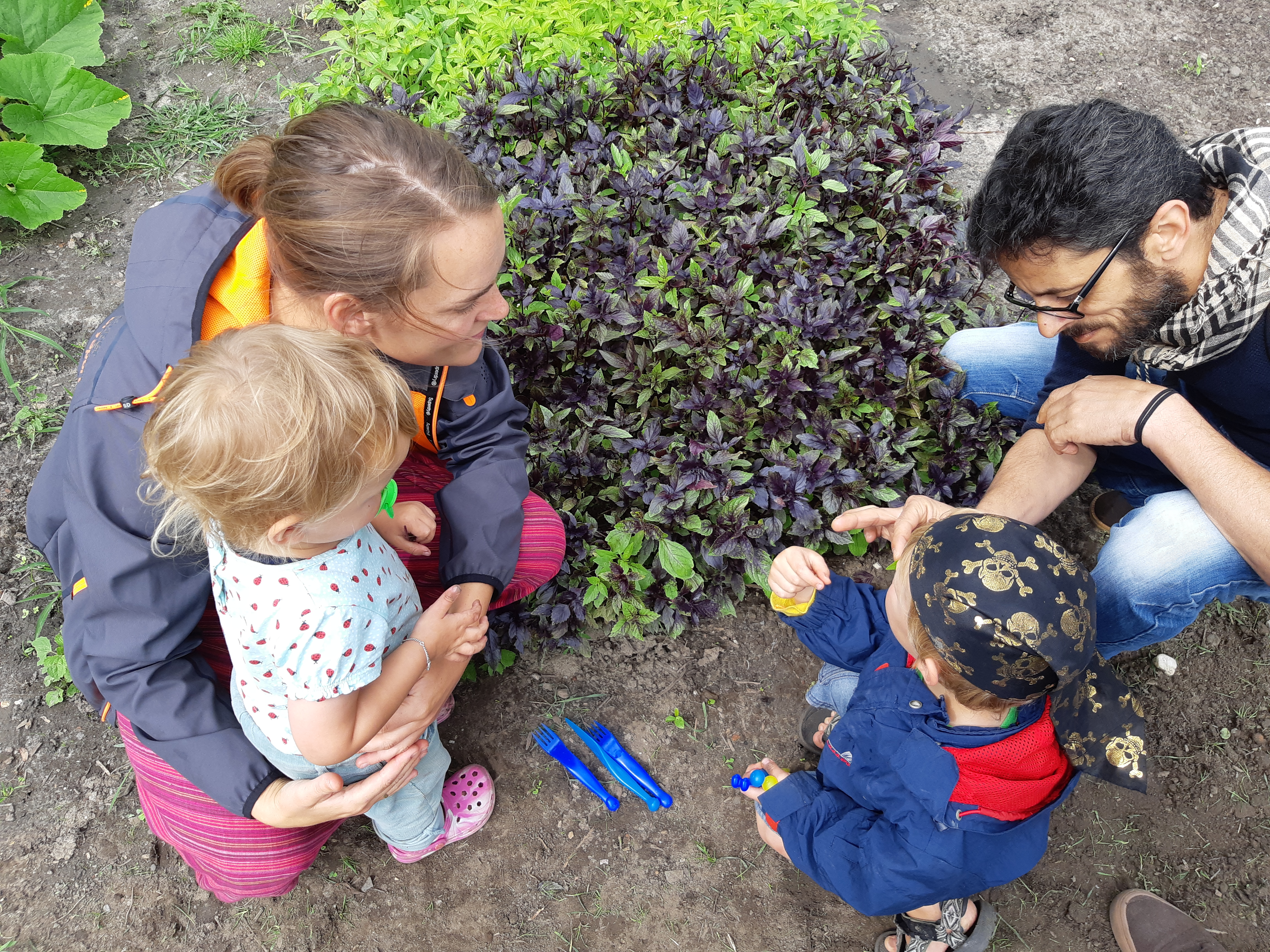
There are various hubs or centres of cultural dynamism in the neighbourhood, most of which are linked to cultural and social entities that promote meetings and socialisation between asylum seekers and neighbours.
This community dimension based on linking asylum seekers to the neighbourhood environment by finding common interests with the neighbours is being the main strategy of this phase, as well as the adaptation of activities to the new context and profiles. For example, activities are being planned for residents with different profiles and education levels, focusing specially to engage women. A lot of work is also being done with the older population of the neighbourhood, a group specially affected by COVID, with some asylum seekers providing support on daily and practical activities. Also, the project is taking advantage of the social dynamism offered by different spaces, such as churches or theatre organisations.
As we have already mentioned, one of the successes of the project is its continuity. The City Council has guaranteed a structural budget of 1.8 million euros per year for the project over the next four years. But we can also point out other important factors that consolidate the sustainability of the project.
In Utrecht there is a broad recognition and political consensus on the need to maintain the project's focus in the future. At the moment a majority of 43 from the 45 City Council members (representing 10 from the 12 political parties) endorse the Plan Einstein approach. It has thus been decided that if new reception centres for asylum seekers are opened, they should be based on the Plan Einstein approach. This has been secured in a "Policy Paper on Future locations".
The new Integration Policy of the city starts in Plan Einstein, which means it is the foundation of the whole integration policy of the city.
Several elements of Plan Einstein approach have also been adopted in the new National Integration Policy which was implemented before the summer. Other Dutch cities have also appeared interested in adapting the project approach and even some European cities.
All these advances that I have highlighted show that the sustainability of the project is quite guaranteed, at least for the next 4 years.
2. Generated Knowledge
The lessons learned throughout the implementation of this project have been many, but below I highlight some of the ones I consider most relevant.
The importance of promoting innovation and creativity, looking for new answers to the challenges that arise in the reception of asylum seekers. It is important to be imaginative and ambitious in order to break certain inertias, even if this has a cost in the complexity of management by straining the most established system.
In this sense, the approach of promoting inclusion from day one has been very positive. Allocating time, marked by waiting, uncertainty and anxiety, to the development of activities and occupations that enhance the autonomy, capacities and self-esteem of asylum seekers has proved to be quite positive not only for the asylum seekers but also for local neighbours.
The connection of asylum seekers with their surroundings and neighbours, through the generation of open spaces for meeting and interaction should be carried out on the basis of equal status of the participants, shared interests and the promotion of cooperation to achieve common objectives.
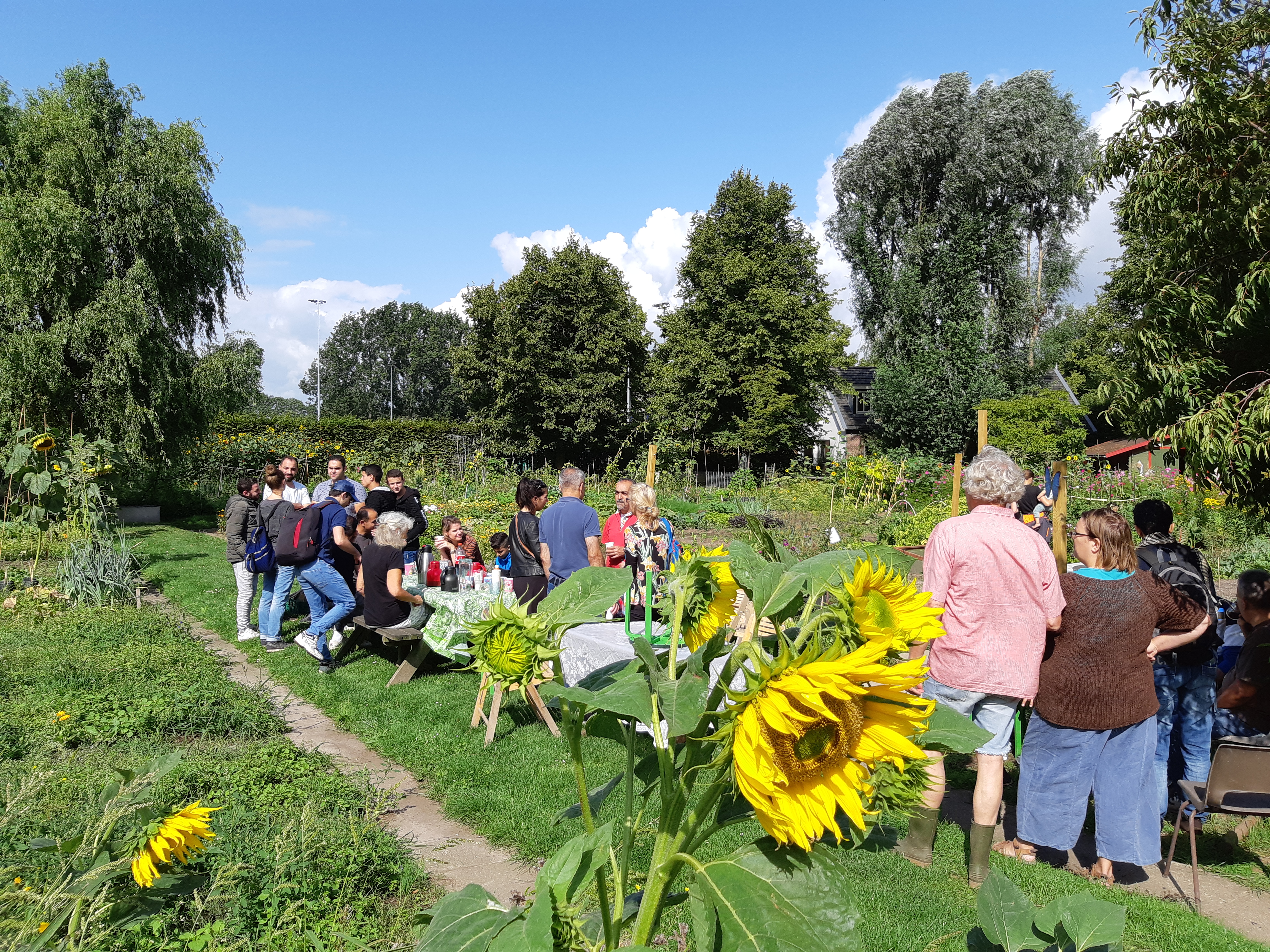
In this sense, it is very important to analyse the characteristics of the neighbourhood and the needs of the residents in order to find objectives with which to connect the asylum seekers and jointly contribute to the development of the neighbourhood.
It is also very important to offer a wide variety of activities adapted to the profiles of asylum seekers (educational levels, ages, gender, families etc.)
Offering free training to asylum seekers and neighbours has been a strategy that has brought benefits to participants and reinforced the common and shared elements. One lesson is that despite the differences related to the legal, personal, professional and uncertain circumstances in which asylum seekers find themselves, the approach should try to transcend these differences and aim to recognise and emphasise their status as neighbours with their interests, skills and talents.
The commitment to inclusion from day one also has a consequence in terms of developing a sense of belonging, first to the neighbourhood and later to the city. This has been demonstrated in part by the link that some refugees who have been accommodated in other municipalities have maintained with the project and the city.
The creation of social and personal networks by asylum seekers with other neighbours, apart from having positive consequences on inclusion, self-esteem and confidence, also has other practical impacts. Research has identified that asylum seekers' learning of English has enabled them to increase their personal networks and as a result they have found it easier to learn Dutch. In other words, if we want people who come to the city to learn the language, we should not focus on isolated trainings, but it is worth promoting the creation of social and personal networks.
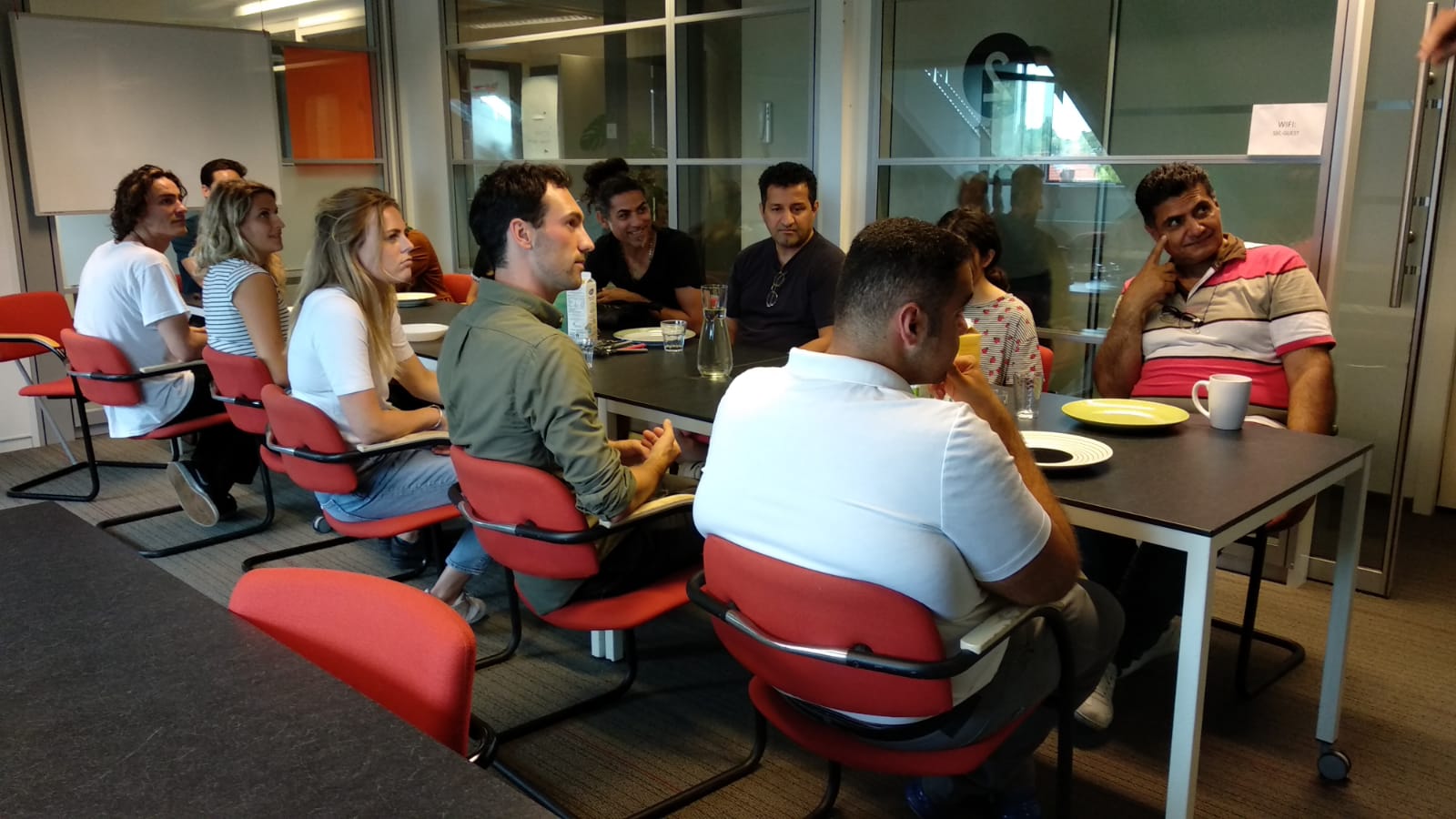
Another lesson learned is the importance of involving various social actors of the city in the project. From the outset, the project was committed to implementing a management model based on shared and horizontal leadership. However, throughout the project there have been changes in the professional teams, both from the city council and from different partners. This has often made it difficult to continue with this shared leadership approach and at times the municipal team has been required to provide more vertical leadership.
In this sense, it is important to maintain periodic spaces for reflection and dialogue in order to internalise the approach of the model and to adjust the different viewpoints and define the roles of the participants and maintain commitment and consensus on the strategies to follow.
In the new Plan Einstein Haydn, they have introduced an Impact Room concept in which all partners (old and new stakeholders who became partners as well) were invited to take shared ownership of the new project based on an equal footing. This process allowed room and space for better mutual understanding and appreciation of the diversity of styles and opinions of the different practitioners. This was felt as a new shared starting point to achieve a joint goal.
Another lesson learned was the need to generate a shared narrative of the project among all the actors involved and municipal authorities. In the second Zoom-in on the project we analysed the criteria to be taken into account in order to create a constructive and positive narrative as an alternative to the more negative narratives which are on the increase (Zoom-in 2: Plan Einstein's narrative).
In this narrative, built from the bottom up, the participants have been the protagonists, through the dissemination of testimonies, interviews, events, the use of social media, and even with the creation of Radio Einstein. In addition, the broad political consensus with the project also made it easier for political discourses to reinforce the key messages, placing more emphasis on shared elements that reinforce the idea of a broader and more inclusive "us".
Activities of a cultural and artistic nature, involving local artists and actors together with asylum seekers, have proved to be very positive both in promoting the participation of asylum seekers and in energising the social and cultural life of the neighbourhood. But these activities, as we have already mentioned, must take into account the differences in profiles, to avoid that certain people are limited in their opportunities to participate.

It has been important to take into account the psychological dimension in the management of a process marked by situations of uncertainty and emotional stress regarding the future. The project has incorporated the approach of moral psychology in collaboration with another project and experts in Belgium, to provide training and help professionals and volunteers in this process. The aim is to provide tools and skills to better manage the emotional dimension and to analyse how one's own convictions can interfere with one's responsibility and professional role in a context that is very much marked by the personal complexities and management of asylum seekers' expectations regarding their future.
Finally, I think it is necessary to stress the importance of flexibility and the ability to adapt to unexpected changes and in the evaluation of the actions in order to adjust the methodology and practices.
Below, I highlight some pills with recommendations for other cities:
- Being innovative means being creative and ambitious, but from knowledge and a deep diagnosis.
- Being innovative means rethinking and questioning formulas and ways of doing things that will involve tensions with other actors, both internal and external, that will have to be managed.
- Multi-level cooperation with other levels of administrations, especially with the national ones is fundamental and complex, as it is necessary to recognise the importance and necessary contribution of the local level.
- Commit to inclusion from day one and do not postpone it for later because it is an investment with significant benefits in the short, medium and long term, both for asylum seekers and for society as a whole.
- It is important to plan and define objectives and strategies, but be aware that the ability to adapt to changes in the context, in people and in actors will be fundamental.
- Creating cooperation networks with social actors from diverse fields, and know-how allow to offer more effective activities adapted to different profiles.
- To promote the involvement of the different actors in the decision-making process, generating specific spaces for debate and shared reflection on the evolution of the project and on its challenges, weaknesses and opportunities.
- To focus on the common interests and needs of the neighbourhood and asylum seekers in order to generate dynamics and activities that motivate and have a positive impact on everyone.
- A commitment to generate spaces and activities that promote social contact and interaction that take into account the criteria of equal status, cooperation to achieve common objectives and that are supported by bridge makers.
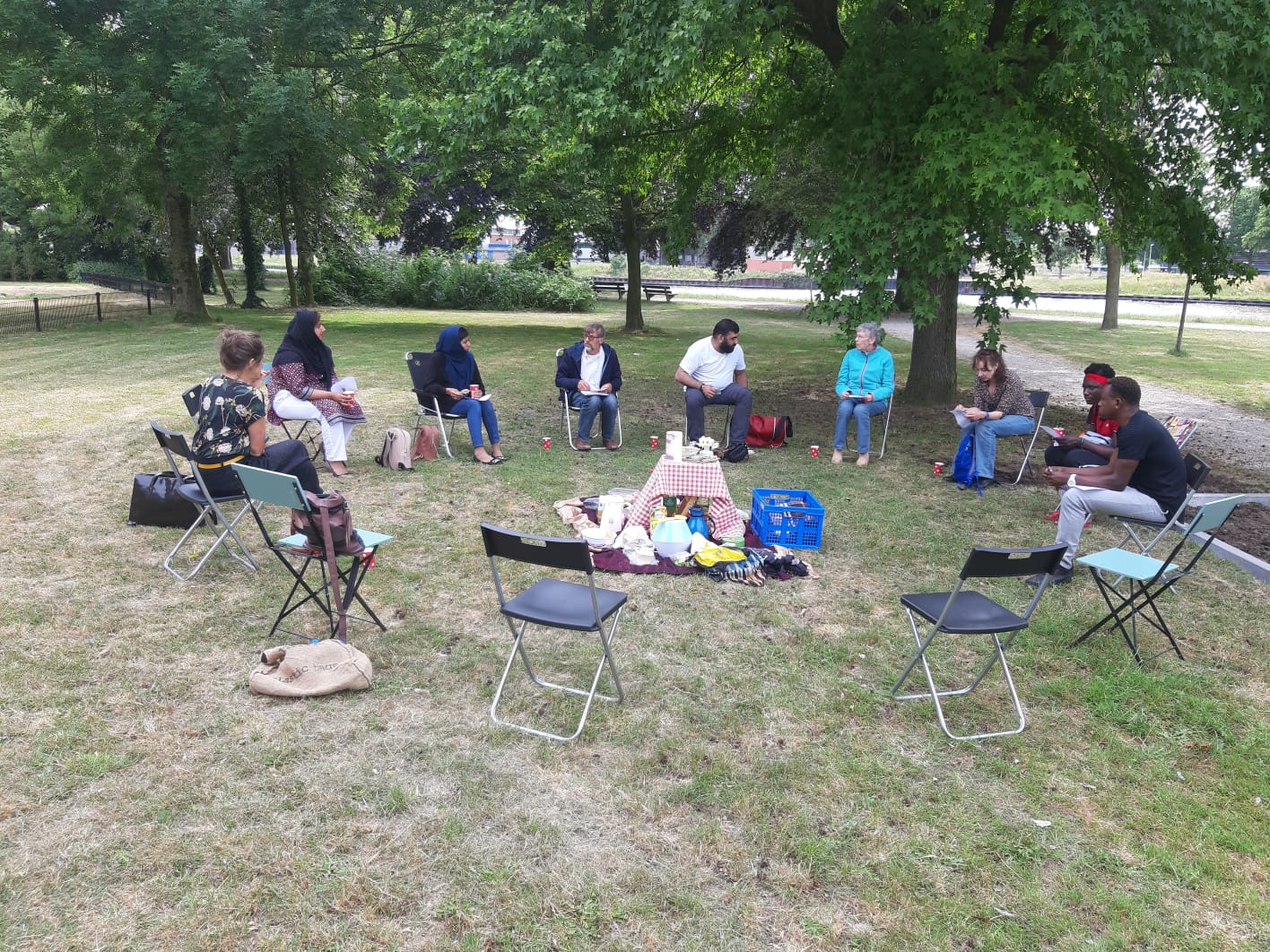
- To promote the involvement of young people and also people from the creative and cultural sector to energise and generate stimulating activities.
- Joint training of asylum seekers and other local residents brings many benefits to the inclusion process, and it is important to tailor training to the shared profiles and interests of both.
- Facilitating the creation of personal and professional networks that provide different opportunities, both practical and psychological that facilitate inclusion.
- To create a shared narrative which must be inclusive and visualising the contribution and diversity of the asylum seekers and emphasising the common elements and the opportunities for the neighbourhood and the city.
- Devote time to evaluation based on a good diagnosis and the desired objectives, but leave room for adaptation of the evaluation system to changes and opportunities that may arise.
- To propose an evaluation in the short, medium and long term, because some of the relevant impacts related to inclusion are observed in the long term.
- The project implementation process should already include strategies to ensure the sustainability of the project. In this sense, it is necessary to strengthen political commitment and consensus and try to influence policies beyond the project and share the knowledge that is generated.
3. Conclusion
In order to make a final assessment of the project, it is important to distinguish the dimension related to the degree of fulfilment of the results initially expected by the project, and a more general dimension related to what this project has meant and generated in the framework of the reception policies for asylum seekers.
Regarding the project evaluation, the external team of evaluators has done a great job and in their report, you can find very detailed information, both quantitative and qualitative (See here the final evaluation report of the project).
It is obvious that evaluating a complex and innovative project like this, which has also had to manage relevant changes in the context, is not easy. Delays in the arrival of asylum seekers, complex negotiations with COA on issues affecting the approach of the or the closure of the Overvecht centre which, although planned, was more precipitous than expected. Moreover, some changes in the professional teams have also involved complexities that have required adaptation and measures to be taken to adjust both management and activities. Finally, the impossibility of starting from an in-depth analysis of the initial situation and not being able to have a comparative analysis with the reality of other centres, added to the fact that some relevant impacts take place in the long term, have also meant important challenges for the evaluation team.
But taking into account all these factors, a great effort has been made by the evaluators to compensate for these context-related weaknesses. Relevant information has been obtained which shows that the project has had positive results in general and some weaknesses have been identified to be taken into account in the new phases of the project. As a result of these analyses, some of the lessons learnt, which I have highlighted in the previous section, have also emerged.
In this sense I would like to point out some elements that seem to me very important in relation to what this project has meant:
The Einstein Plan has proposed a change of paradigm in how the policies for the reception of asylum seekers have been managed in the Netherlands (and in other countries, hence the importance of maintaining a global perspective, especially a European one).
The project has been able to make good use of the support provided by the UIA Initiative's funding in order to drive forward a process of change that was already well thought out. In other words, a project was not created from scratch in order to adapt it to the call, but rather a proposal was presented that had already been in the minds of the technical managers in Utrecht for some time.
The results of the project show that the commitment to inclusion from day one is a wise choice that must be maintained, reinforced and adapted to different contexts and profiles.
Promoting open spaces for positive interaction, offering free training, advice and support, and promoting activities based on shared interests and objectives for both asylum seekers and other residents and the neighbourhood as a whole, is the project's DNA. Beyond the data on the number of participants and the objective outcomes, the results have shown that this approach provides many benefits to favour inclusion and generate a more positive atmosphere that also may be effective to counteract the more negative and hostile narratives about the arrival of refugees.
I believe that the greatest success of the project is to have demonstrated that it is possible to change the dynamics and rethink policies based on the creativity, commitment and cooperation of diverse actors.
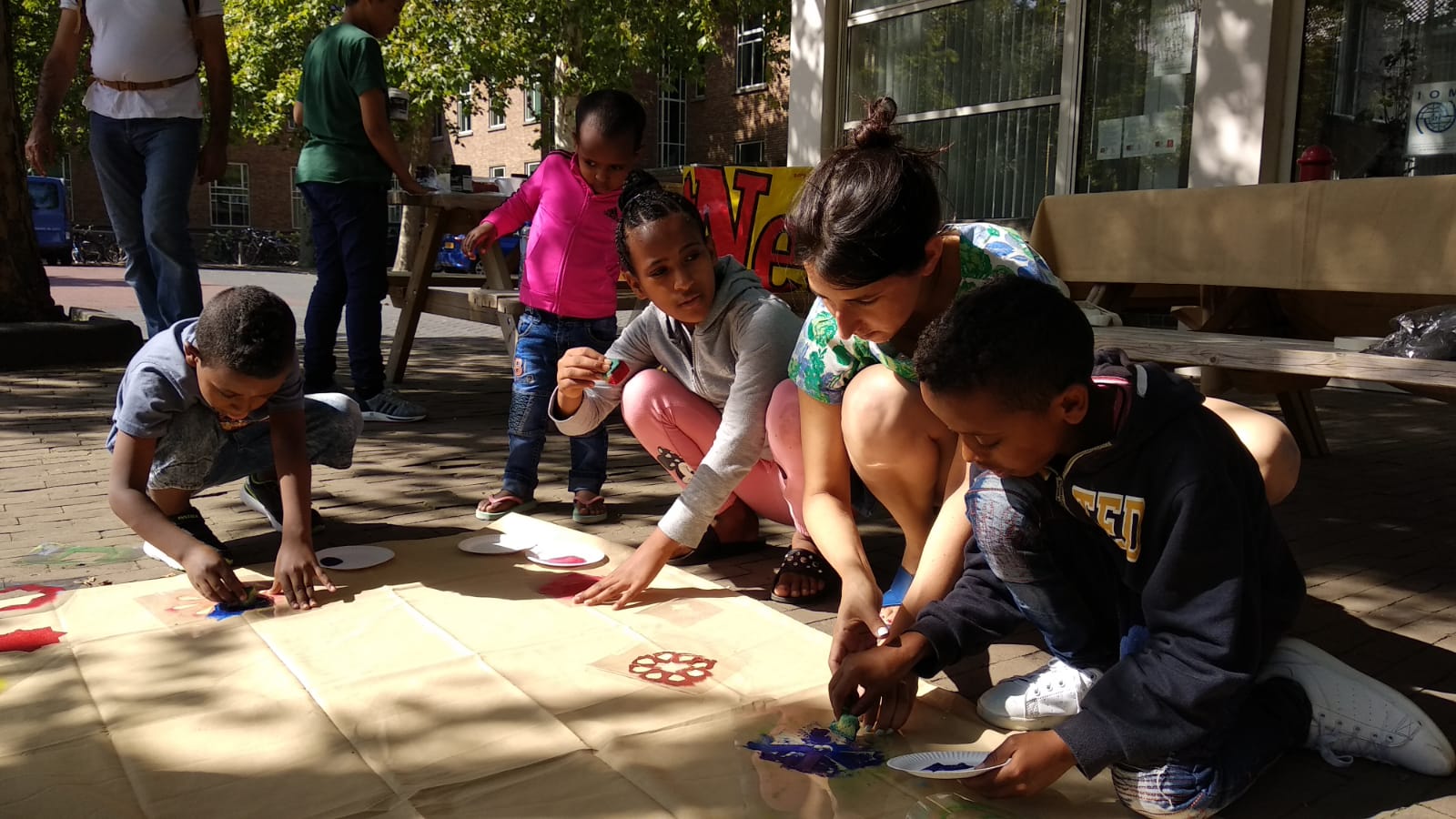
The main legacy of the project would be twofold:
Firstly, it has demonstrated that there is another way of managing the reception of asylum seekers. A way that is committed to inclusion from day one and that understands this process as an opportunity and not as a burden. Because this is not only a change from the experience of asylum seekers, as it brings new opportunities for the neighbourhood and local residents. This vision is the main legacy of the project. And we can consider it a legacy because this approach has been formally included in the formal integration strategy of the city and it has also influenced national policies.
Secondly, I believe that this impact reinforces the conviction that cities must play a key role in the reception of refugees. This would not be the case if we were not really concerned about inclusion and living together in diversity, but just focusing on the control and security dimension. But this approach cannot be sustained from an in-depth analysis of long-term costs and benefits, let alone from an approach that is concerned with equality, recognition of diversity and cohesion. Plan Einstein has shown that the most innovative and high-impact approaches must involve a greater role for cities in decision-making and in the design of reception processes.

About this resource
The Urban Innovative Actions (UIA) is a European Union initiative that provided funding to urban areas across Europe to test new and unproven solutions to urban challenges. The initiative had a total ERDF budget of €372 million for 2014-2020.
Similar content




